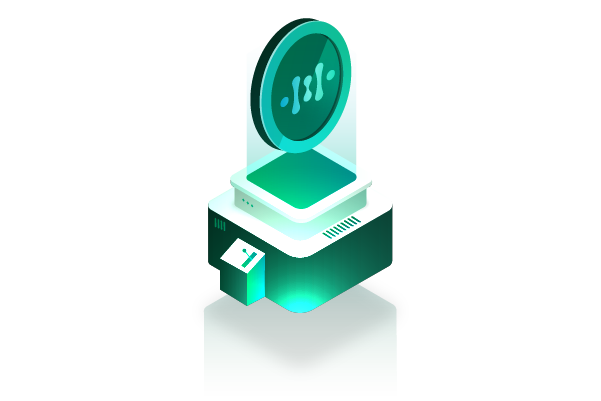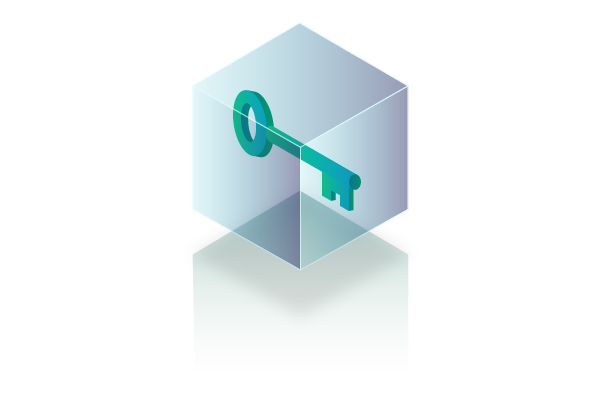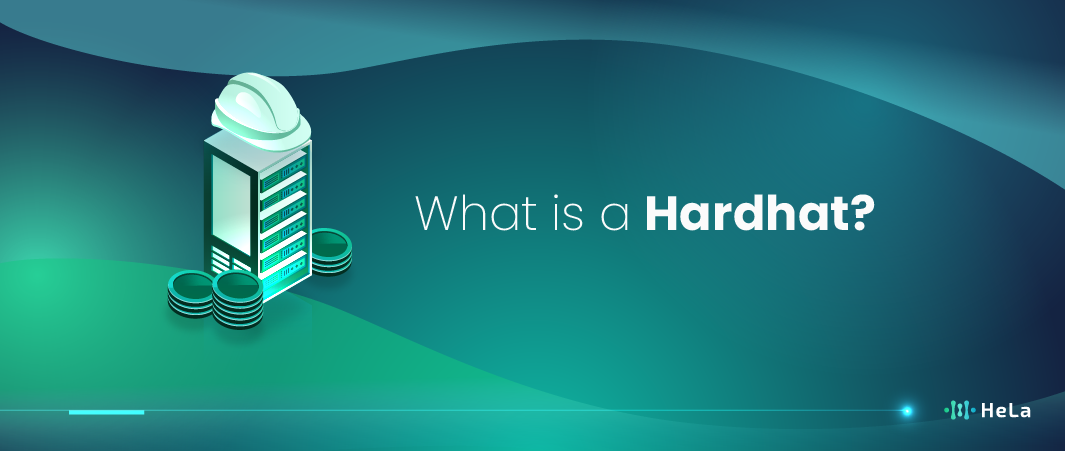Blockchain technology has revolutionized various industries by introducing decentralized and secure systems. As the technology evolves, so does the need for robust tools to facilitate its development. One such tool that has gained significant attention is Hardhat. If you are new to blockchain development or looking to enhance your existing knowledge, understanding what Hardhat is and how it fits into the blockchain ecosystem is essential.
Hardhat is a powerful development environment designed specifically for Ethereum, the most popular blockchain platform for smart contracts. It simplifies the process of building, testing, and deploying smart contracts, making it an indispensable tool for developers. In this article, we will delve into what Hardhat is, its role in blockchain development, its features, how to use it, and the benefits it offers.
Whether you are a novice developer or an experienced professional, this comprehensive guide will provide you with valuable insights into Hardhat and its significance in the world of blockchain development.
What is Hardhat?

Hardhat is a development environment specifically designed for Ethereum, the leading blockchain platform for smart contracts. It provides developers with the tools they need to manage and automate the recurring tasks inherent in the development process. This includes compiling, testing, and deploying smart contracts, as well as debugging and running scripts to interact with the Ethereum network.
Also Read: What is a Wallet Address? Why It Matters in Crypto Transactions
At its core, Hardhat aims to streamline the workflow for Ethereum developers by offering a flexible and extensible environment. This flexibility is one of Hardhat’s standout features, allowing developers to customize their setup according to their specific needs. With Hardhat, tasks that used to be complex and time-consuming can now be executed efficiently, saving developers time and reducing the potential for errors.
Hardhat also integrates seamlessly with other popular tools in the Ethereum ecosystem, such as Ethers.js, a JavaScript library for interacting with the Ethereum blockchain. This integration enhances its functionality and makes it easier for developers to build, test, and deploy their smart contracts.
The Role of Hardhat in Blockchain Development

In the realm of blockchain development, efficiency and precision are paramount. Hardhat plays a critical role in achieving these goals by providing developers with a comprehensive toolkit designed to simplify and enhance the entire development process. Here are several ways in which Hardhat is pivotal to blockchain development:
- Streamlining Development Tasks: Hardhat automates various tasks such as compilation, testing, and deployment of smart contracts. This automation not only saves time but also minimizes human error, ensuring that the smart contracts work as intended.
- Enhanced Testing Capabilities: One of Hardhat’s significant contributions is its advanced testing environment. Developers can write unit tests and integration tests to ensure their smart contracts behave correctly under different scenarios. Hardhat’s testing framework supports both JavaScript and TypeScript, making it accessible to a wide range of developers.
- Debugging and Error Handling: Debugging smart contracts can be challenging due to the complexity of blockchain environments. Hardhat provides robust debugging tools that allow developers to pinpoint and fix issues more efficiently. This includes features like stack traces and console.log support within smart contracts.
- Network Management: Hardhat allows developers to easily manage different Ethereum networks, whether they are local, testnets, or the mainnet. This flexibility is crucial for developers who need to test their contracts in various environments before deployment.
- Integration with Other Tools: Hardhat integrates seamlessly with other essential tools in the Ethereum ecosystem. For example, it works well with Ethers.js for interacting with Ethereum and Waffle for testing. These integrations help create a cohesive development environment where various tools complement each other.
- Task and Plugin System: Hardhat’s task and plugin system allows developers to extend its functionality. They can create custom tasks and use plugins to add new features or modify existing ones. This extensibility ensures that Hardhat can adapt to the evolving needs of blockchain development.
By fulfilling these roles, Hardhat not only simplifies the development process but also enhances the quality and reliability of smart contracts. Its comprehensive toolkit and integrations make it an indispensable asset for developers working in the blockchain space.
Key Features of Hardhat

Hardhat offers a range of powerful features that make it an essential tool for Ethereum developers. These features are designed to simplify various aspects of smart contract development, from initial coding to final deployment. Here are some of the key features of Hardhat:
1. Flexible Configuration
Hardhat’s configuration file is highly customizable, allowing developers to tailor the environment to their specific needs. This flexibility enables the inclusion of different plugins, networks, and compiler settings, making it adaptable to various project requirements.
2. Hardhat Network
Hardhat comes with a built-in Ethereum network designed for development and testing. This local blockchain network is incredibly fast and can be reset at any time, providing a fresh environment for each test run. It also supports advanced features like snapshots and time travel, which are invaluable for testing complex contract interactions.
3. Task Runner
The task runner in Hardhat automates recurring development tasks. Developers can define custom tasks to suit their workflow, making it easier to compile contracts, run tests, deploy to networks, and more. This feature increases productivity by reducing the need for repetitive manual tasks.
4. Plugins
Hardhat’s architecture supports a wide array of plugins that extend its core functionality. Some popular plugins include Hardhat-deploy for deployment management, Hardhat-ethers for integrating with Ethers.js, and Hardhat-waffle for using Waffle’s testing framework. The plugin ecosystem is continuously growing, providing new tools and integrations that enhance development capabilities.
5. Advanced Testing Environment
Hardhat’s testing environment supports both JavaScript and TypeScript, allowing developers to write tests in their preferred language. The framework also integrates with popular testing libraries like Mocha and Chai, providing a familiar environment for writing and running tests. Hardhat’s support for automated testing ensures that smart contracts are robust and error-free before deployment.
6. Comprehensive Debugging Tools
Debugging is made easier with Hardhat’s comprehensive debugging tools. Features like stack traces, console.log support within contracts, and detailed error messages help developers quickly identify and fix issues. This robust debugging capability is essential for developing reliable and secure smart contracts.
7. Script Runner
Hardhat allows developers to write and run scripts to automate interactions with smart contracts. This feature is useful for tasks like deploying contracts, interacting with deployed contracts, and managing contract states across different networks. The script runner enhances automation and streamlines the development workflow.
8. Gas Usage Reporting
Hardhat can provide detailed reports on the gas usage of smart contracts. This feature is crucial for optimizing contracts to be more cost-effective when deployed on the Ethereum mainnet. Understanding and reducing gas costs can lead to significant savings, especially for contracts that are frequently executed.
These features collectively make Hardhat a powerful and versatile tool for Ethereum development. By leveraging Hardhat’s capabilities, developers can create, test, and deploy smart contracts more efficiently and effectively.
How to Use Hardhat
Using Hardhat involves a series of well-defined steps that guide you through setting up your development environment, writing and testing smart contracts, and deploying them to the Ethereum network. Here’s a general overview of how to use Hardhat:
1. Installation
First, you need to install Hardhat using a package manager like npm. This sets up the Hardhat environment on your system, allowing you to create and manage blockchain projects.
2. Creating a New Project
After installation, you can create a new Hardhat project. This involves setting up a project directory and initializing it with Hardhat’s default configuration and directory structure. Hardhat provides an interactive command that helps you scaffold the project quickly.
3. Project Configuration
Every Hardhat project includes a configuration file where you define the settings for your project. This file allows you to specify network configurations, Solidity compiler settings, and integrate various plugins that extend Hardhat’s functionality.
4. Writing Smart Contracts
Smart contracts are written in Solidity and placed in the contracts directory of your Hardhat project. Hardhat supports the latest versions of Solidity, ensuring compatibility with modern Ethereum standards.
5. Compiling Contracts
Hardhat provides commands to compile your smart contracts. This process translates your Solidity code into bytecode that can be deployed on the Ethereum blockchain. Compilation also generates the necessary artifacts for deployment and interaction.
6. Writing and Running Tests
Testing is a crucial part of blockchain development. Hardhat allows you to write tests in JavaScript or TypeScript to ensure your contracts behave as expected. These tests can be run using Hardhat’s testing framework, which integrates seamlessly with popular testing libraries.
7. Deploying Contracts
Deployment scripts are used to deploy your compiled smart contracts to the Ethereum network. Hardhat provides tools to manage deployments across different networks, whether it’s a local development network, testnets, or the main Ethereum network.
8. Interacting with Deployed Contracts
Once your contracts are deployed, Hardhat allows you to interact with them through scripts or a console. This feature is useful for performing operations on your contracts, such as calling functions or transferring tokens.
9. Debugging and Error Handling
Hardhat offers robust debugging tools to help you identify and fix issues in your smart contracts. Features like detailed error messages, stack traces, and console logging within contracts make debugging more efficient.
By following these steps, developers can leverage Hardhat to streamline the development, testing, and deployment of Ethereum smart contracts. Its user-friendly interface, comprehensive documentation, and extensive plugin ecosystem make it an indispensable tool for blockchain developers.
Benefits of Using Hardhat
Hardhat provides numerous benefits that make it a preferred choice for Ethereum developers. Here are some of the key advantages of using Hardhat in blockchain development:
Efficiency and Automation
Hardhat automates many of the repetitive tasks involved in smart contract development, such as compiling, testing, and deploying. This automation not only saves time but also reduces the likelihood of human error, leading to more reliable and efficient development processes.
Advanced Testing Environment
Hardhat’s testing environment supports comprehensive testing of smart contracts. Developers can write unit tests and integration tests to ensure their contracts work as intended. This thorough testing capability helps catch bugs and issues early in the development cycle, enhancing the overall quality of the contracts.
Robust Debugging Tools
Debugging smart contracts can be challenging, but Hardhat provides robust tools to make this easier. With features like detailed error messages, stack traces, and the ability to use console.log within contracts, developers can quickly identify and resolve issues. This leads to faster development cycles and more secure contracts.
Flexible Configuration
Hardhat’s configuration system is highly flexible, allowing developers to tailor the environment to their specific needs. This includes configuring multiple networks, integrating various plugins, and setting custom compiler options. Such flexibility ensures that Hardhat can adapt to a wide range of project requirements.
Seamless Integration with Ecosystem Tools
Hardhat integrates seamlessly with other popular tools in the Ethereum ecosystem, such as Ethers.js for blockchain interaction and Waffle for testing. These integrations enhance its functionality and provide a cohesive development experience, allowing developers to leverage the strengths of multiple tools in a unified environment.
Local Ethereum Network
Hardhat includes a built-in local Ethereum network that can be used for development and testing. This local network is fast and easy to reset, providing a fresh environment for each test run. Advanced features like snapshots and time travel further enhance the testing capabilities, making it easier to simulate different blockchain states and scenarios.
Extensibility through Plugins
The plugin system in Hardhat allows developers to extend its functionality easily. There is a growing ecosystem of plugins that add new features or modify existing ones, enabling developers to customize their development environment. This extensibility ensures that Hardhat can keep pace with the evolving needs of the blockchain development community.
Also Read: Top 10 Yield Farming Platforms You Should Try in 2024
Community and Support
Hardhat has a strong and active community of developers. The extensive documentation, tutorials, and community forums provide ample support for both new and experienced developers. This community-driven approach ensures that any issues are quickly addressed, and best practices are shared widely.
Cost Optimization
By providing detailed gas usage reports, Hardhat helps developers optimize their smart contracts for cost efficiency. Understanding and reducing gas costs is crucial for deploying contracts on the Ethereum mainnet, where high gas fees can be prohibitive. Hardhat’s insights into gas usage enable developers to write more efficient and cost-effective contracts.
These benefits collectively make Hardhat an invaluable tool for anyone involved in Ethereum development. Its comprehensive feature set, combined with its flexibility and ease of use, ensures that developers can build, test, and deploy smart contracts with greater confidence and efficiency.
Conclusion
Hardhat has become an essential tool in the Ethereum development ecosystem, providing developers with a comprehensive environment to build, test, and deploy smart contracts. Its robust features, such as advanced testing and debugging capabilities, streamline the development process, ensuring that smart contracts are reliable and secure before deployment. This efficiency is crucial for developers aiming to create high-quality blockchain applications.
The flexibility and extensibility of Hardhat allow it to adapt to various project needs. Developers can configure different network settings, integrate with essential tools, and use a wide array of plugins to tailor their development environment. This adaptability ensures that Hardhat can keep pace with the evolving standards and practices in blockchain technology, making it a versatile choice for a wide range of projects.
In addition to its technical benefits, Hardhat boasts strong community support and comprehensive documentation. These resources provide developers with the necessary guidance and assistance, fostering a collaborative and innovative development environment. As blockchain technology continues to grow, Hardhat remains at the forefront, enabling developers to efficiently build and deploy the decentralized applications of the future.
Disclaimer: The information provided by HeLa Labs in this article is intended for general informational purposes and does not reflect the company’s opinion. It is not intended as investment advice or recommendations. Readers are strongly advised to conduct their own thorough research and consult with a qualified financial advisor before making any financial decisions.

Joshua Soriano
I am a writer specializing in decentralized systems, digital assets, and Web3 innovation. I develop research-driven explainers, case studies, and thought leadership that connect blockchain infrastructure, smart contract design, and tokenization models to real-world outcomes.
My work focuses on translating complex technical concepts into clear, actionable narratives for builders, businesses, and investors, highlighting transparency, security, and operational efficiency. Each piece blends primary-source research, protocol documentation, and practitioner insights to surface what matters for adoption and risk reduction, helping teams make informed decisions with precise, accessible content.
- Joshua Soriano#molongui-disabled-link
- Joshua Soriano#molongui-disabled-link
- Joshua Soriano#molongui-disabled-link
- Joshua Soriano#molongui-disabled-link

